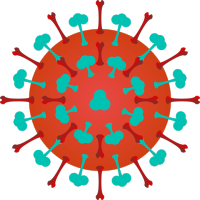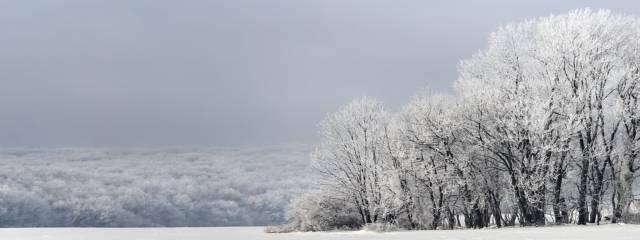| pattern | Wind-heat |
The pattern of common cold due to wind and heat refers to the symptoms and signs that appear when wind and heat pathogens invade the superficial layer of the body.
The main clinical manifestations include: slight aversion to wind and cold, mild sweating, general discomfort, headache, slight thirst, or possible sore throat, red edges and tip of the tongue, thin white coating, and a floating and rapid pulse.
The pattern of common cold due to wind and heat is commonly seen in common cold, spring warmth, and various external-contraction febrile diseases.
This syndrome needs to be differentiated from the "pattern of common cold due to wind-cold" and the "pattern of warm dryness."
bubble_chart Differentiation and Treatment
Wind-heat pathogens are warm pathogens, Wenbing Tiaobian. The "External Contraction Warm Heat Chapter" points out: "The upper attack of warm pathogen starts from the lung." The lung governs the exterior defense, and wind-heat pathogens damage the exterior defense. Therefore, symptoms include fever with slight aversion to cold. Wind-heat is a yang pathogen, easily transforming into fire, thus easily damaging fluids and consuming body fluids, leading to thirst. Shibing Lun states: "Spring should be warm, but excessive heat is untimely qi. The wind encountered must carry heat, hence it is called wind Rebing. This not only differs from wind-warmth but also from Rebing. ... At the onset, there is mild fever, severe headache, dizziness, or excessive sweating, or cough, or red eyes, or yellow nasal discharge, yellow tongue coating, and a floating rapid pulse. The treatment should first use the method of releasing the exterior with pungent-cool herbs."
This syndrome is seen in common cold and can be divided into wind-heat exterior excess pattern and wind-heat exterior deficiency pattern.
Wind-heat exterior excess pattern presents with severe fever, slight aversion to wind and cold, nasal congestion with yellow discharge, body heat without sweating, headache, sore throat, thirst with desire to drink, or cough with yellow phlegm, red tongue edges and tip, thin yellow coating, and a floating rapid pulse. This is due to a strong constitution with internal heat accumulation and exposure to wind-heat pathogens, with obvious heat signs. Treatment should focus on releasing the exterior with pungent-cool herbs, using the pungent-cool and moderate formula Lonicera and Forsythia Powder (Wenbing Tiaobian). If the transformation of wind-heat pathogens into heat is not obvious, with only cough and no systemic symptoms, the pungent-cool and mild formula Mulberry Leaf and Chrysanthemum Decoction (Wenbing Tiaobian) should be used. If there is headache, generalized joint pain, high fever, and slight aversion to cold on the back, treatment should focus on clearing heat and releasing the exterior with sweet-cold herbs, using Qingjie Decoction (Yixue Zhongzhong Canxilu). If fever and body pain are severe, with obvious cough, Fistular Onion Stalk, Fermented Soybean and Platycodon Decoction (Tongsu Shanghan Lun) should be used.
Wind-heat exterior deficiency pattern is caused by a constitution with loose striae and interstices and weak exterior defense, leading to heat-induced sweating and significant thirst after exposure to wind-heat pathogens. Treatment should focus on strengthening the exterior and releasing the exterior, using Modified Polyghace Seche Decoction (Tongsu Shanghan Lun). This syndrome is seen in the early stages of measles, caused by wind-heat pathogens carrying toxic pathogens, presenting with fever and chills, cough, sneezing, tearing and photophobia, and red rashes spreading gradually. Treatment should focus on releasing the exterior with pungent-cool herbs, using Cimicifuga and Pueraria Decoction ("Yan's Pediatric Treatise"). This syndrome is also seen in influenza, a seasonal epidemic of common cold caused by wind-heat pathogens, with symptoms including fever, headache, thirst without aversion to cold. Treatment should focus on releasing the flesh and clearing heat, using Bupleurum and Pueraria Flesh-Releasing Decoction (Yixue Xinwu).When treating wind-heat exterior pattern, it is essential to consider the individual's constitution. Weak individuals exposed to wind-heat pathogens often experience excessive sweating and low-grade fever, which should be differentiated as qi deficiency or yin deficiency and not treated with conventional methods. Jinnang Milu discusses the treatment of common cold: "The treatment method should consider internal and external causes. External causes are excessive, ... internal causes are insufficient, thus strengthening the defense qi and resolving wind pathogens." Postpartum or after blood loss, exposure to wind-heat pathogens presents with severe fever, slight aversion to cold, sore throat, and thirst. Treatment should focus on nourishing blood and dispersing wind, using Four Ingredients Decoction (Hejiju Fang) combined with Lonicera and Forsythia Powder (Wenbing Tiaobian). "Ye Tian-shi's Gynaecology Complete Book: External-Contraction Fever" states: "Postpartum external-contraction fever ... is different from true cold-damage disease, ... treatment should consider deficiency and excess and treat accordingly. If pathogenic qi is not severe, use Three Bupleurum Decoction, ..." Individuals with spleen and lung qi deficiency and weak exterior defense are most susceptible to external pathogens, presenting with mild fever, obvious aversion to cold, red tongue edges and tip, and sore throat. Treatment should focus on reinforcing healthy qi and eliminating pathogenic factors, using Jade Screen Powder (Shiyi Dexiao Fang) combined with Mulberry Leaf and Chrysanthemum Decoction (Wenbing Tiaobian).
The invasion of wind-heat pathogens often occurs in spring. Although it may initially appear superficial, its transmission and change are relatively rapid. As stated in "Juren's Medical Notes: Common Cold in Spring": "Cool and pungent herbs are most effective in dispersing and transforming, allowing the stagnant pathogens to be resolved through the action of dispersing and transforming agents. However, treatment must be prompt. If delayed, one may witness the convergence of external wind and internal fire, leading to the complication of wind and fire stirring together. ... If prolonged, it may result in lung damage, which is the consequence of fire pathogen overcoming metal." In general, the pattern of common cold due to wind and heat can manifest in two ways: one is the progression of wind-heat pathogens into the interior, presenting symptoms such as alternating chills and fever, bitter taste in the mouth, and dry throat, transforming into a half-exterior half-interior pattern; the other, as mentioned above, involves wind-heat damaging the lung, leading to impaired lung dispersion and descent, resulting in severe cough, thirst, red tongue with yellow coating, and transforming into a lung heat cough pattern.
bubble_chart Differentiation of Similar Patterns
- Pattern of common cold due to wind and heat and pattern of common cold due to wind-cold: Both have symptoms such as fever, aversion to cold, clear nasal discharge, and a floating pulse. However, due to the different nature of the pathogenic factors, the manifestations of cold and heat are also different. In the pattern of common cold due to wind and heat, fever is severe, aversion to cold is mild, there is yellow nasal discharge, accompanied by sore throat, dry throat or yellow urine, and the tongue edges and tip are red. In the pattern of common cold due to wind-cold, aversion to cold is severe, fever is mild, there is clear watery nasal discharge, pain in the lower back and limbs, the throat is not dry, and the urine is not yellow. The pulse manifestation in the pattern of common cold due to wind and heat may show a floating and rapid pulse, while the pulse in the pattern of common cold due to wind-cold is usually floating and tight or floating and moderate. Additionally, the season of infection can also be a reference. Generally, the pattern of common cold due to wind and heat is more common in spring, while the pattern of common cold due to wind-cold is more common in winter and autumn.
- Pattern of common cold due to wind and heat and pattern of warm dryness: Both have symptoms such as fever, slight aversion to wind and cold, and dry and sore throat. However, since dryness pathogens are most likely to damage body fluids, the symptoms of fluid damage are more pronounced. The external orifice of the lung, the nose, and the skin and hair, which are associated with the lung, may show signs of dryness and lack of moisture. In severe cases, the lips and tongue may also be dry. The season of infection can also be a reference. The pattern of common cold due to wind and heat is more common in spring, while the pattern of warm dryness occurs at the end of summer and the beginning of autumn, when the intense heat has just subsided.
- Suwen-Gukong Lun: "Wind from the outside causes chills, sweating, headache, heavy body, and aversion to cold."
- Rumen Shiqin‧Treating Cold-Damage Disease: "When people are exposed to wind, seasonal epidemics, warm diseases, or cold-damage diseases, within three days, symptoms such as headache, body heat, and aversion to cold may appear. Tong Sheng San and Yi Yuan San can be used." "Neijing says: When the year's fire is excessive, scorching heat prevails, and the fire energy is too strong, the lung metal is affected, corresponding to the planet Mars, and the fire becomes visibly bright. If pungent and cool formulas are used to resolve it, all will be well."
- Leizheng Zhicai‧Common Cold: "Symptoms include aversion to wind, sweating, floating pulse, headache, nasal congestion, heavy voice, cough with excessive phlegm, or chills and fever. The severity of symptoms depends on the strength of the defense qi and the depth of the common cold." "For those with a strong constitution, treat with pungent and cool formulas in spring and summer, and pungent and warm formulas in autumn and winter to release the exterior and disperse wind through sweating. For those with a weak constitution, strengthen the defense qi while also resolving wind pathogens."
- Zhengzhi Huibu-‧Common Cold says: "If the lungs have pre-existing phlegm-heat and are further constrained by wind pathogens, internal fire cannot be vented, leading to a condition called cold-heat, which is an excess pattern involving both exterior and interior. For those with weak original qi and loose exterior, even slight carelessness can lead to wind pattern, which is a deficiency pattern involving both exterior and interior."







